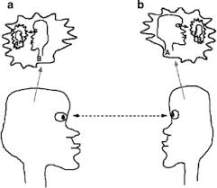The clearer your understanding of your own psychological foundation, the better results you can create for your positions.
Written by: hitesh.eth
Translated by: Luffy, Foresight News
People's understanding of token issuance stems from evolutionary trends. In cryptocurrency, evolutionary trends often carry memories of past profits. What matters is not just what happened in the past, but the patterns that worked in the past. Therefore, most participants are not truly betting on fundamentals; instead, they are trying to recreate moments that once made money, subconsciously chasing historical highs by repeating the same behaviors.
In this market, there are participants from different time points:
Some are "old players" from before 2018;
Most are newcomers who entered after 2020;
There are also on-chain users who joined in the past three years.
These groups have different understandings of token issuance based on their respective evolutionary tendencies. This means their emotional interpretations and expectations of the same event are completely different.
Participants from before 2018 still pursue certainty, valuing roadmaps, token economics, practicality, and vision, hoping the team provides proof of work and actual progress, preferably with real income. They are the natives of ICOs, having witnessed the changes of cycles, and tend to favor projects that are continuously evolving.
Participants after 2020 seek shortcuts, most still holding tokens "fed" by KOLs. Their mindset is rooted in wishful thinking; they may not care about the substance of the project, only whether someone will take over at a higher price. Their patience is limited, but their expectations are unlimited.
Recent on-chain newcomers pursue free gains or quick thrills. They act aggressively and swiftly, participating in all mining, following all trends, hustling for points, and trying to hype every hot topic. But their expectations are too high; even earning a few thousand dollars feels insufficient, and they ultimately incur losses due to overtrading, with most unable to extricate themselves.
These three types of participants possess three different "psychological spaces," which I call intersubjective spaces.

In cryptocurrency, intersubjectivity is not an abstract philosophical concept but a tangible reality. It refers to a shared belief among multiple people, where this "collective fiction" temporarily becomes reality through everyone's joint actions.
In the cryptocurrency field, these shared beliefs drive market development.
The thoughts of participants in these spaces are intersubjective. They recognize each other, hype each other, and maintain each other's viewpoints. This intersubjectivity creates a powerful community, a tribal force that acts as a positive or negative catalyst for tokens.
Those in these intersubjective spaces have been involved for a long time. They take on more risks, invest more energy, and believe in the story before it becomes reality.
When tokens are delivered, they invest emotions. They are not just holding tokens; they themselves become the tokens. They are the community. They become the spokespersons for projects on social media, attracting attention, creating memes, drawing in others, and continuously expanding the intersubjective space.
Hyperliquid is a typical case: early believers formed a strong intersubjective community, receiving rewards through large-scale airdrops, and the airdrops themselves became evidence of "faith working," which in turn fostered more faith, creating a cycle. A similar logic applies to Memecoins like BONK, WIF, and POPCAT, all driven first by intersubjective energy.
In cryptocurrency, price is narrative, a leading indicator.
If the price rises, more people will join. But before that, someone needs to believe that the price will rise. This is where the intersubjective community plays its role.
They act before the results. They become the cause. These believers do not act in isolation; they collaborate interpersonally. They promote together, post together, fight together, and collectively build a shared reality.
When others start to join, they view the price as confirmation. The price is no longer just a number; it is a signal. This signal cycles back, stimulating more confidence, more purchases, and more price action. This is reflexivity.

The reflexivity in cryptocurrency means that price influences belief, and belief influences price. It is a feedback loop where perception and valuation mutually affect each other.
Specifically manifested as:
People buy tokens due to price increases;
Price increases become proof of success;
Success transforms into marketing material;
Marketing shapes the narrative;
The narrative attracts more buyers;
More buyers push the price further up.
However, the "cause" of a price surge is far more complex than the "effect":
The drive for Memecoins may stem from culture;
DeFi projects may stem from income;
AI agents may stem from technology.
Their commonality is: starting from the shared beliefs of a few, ending with the buy-in of the many.
Those entering during the reflexivity phase typically buy "dreams" rather than logic, which becomes the "exit liquidity" for those entering during the intersubjective phase.
At this point, the game presents asymmetry.
Participants in the two phases (intersubjective phase and reflexivity phase) manipulate information, create narratives, distort facts, and expand beliefs to align others with their version of reality.
Over time, multiple realities form around the same symbol. Each group's beliefs are slightly different. These are all perceived realities, micro echo chambers of belief. Each group has different reasons for holding different views, expects different outcomes, and exits at different times. These micro intersubjective spaces create turbulence, fear, greed, and often chaos.
Most people in these micro-realities fall into extreme greed, forgetting their initial intentions for entering, only remembering potential losses. When the bubble bursts, they not only lose money but also faith, collapsing in the space they once celebrated.
The true beneficiaries of token price discovery are those who coordinated early (shaping token prices through shared beliefs, behavioral resonance, and group collaboration). But even for them, profits can only be realized if token prices remain significantly above their expectations, allowing them to exit confidently.
Ultimately, price discovery is not a chart event but a coordination event. It is shaped by how humans perceive value, believe in stories, and synchronize actions with others.
So, you must always know:
Which phase you are in;
What "reality" you are participating in;
What kind of understanding you hold when you believe the token will rise.
The clearer your understanding of your own psychological foundation, the better results you can create for your positions.
免责声明:本文章仅代表作者个人观点,不代表本平台的立场和观点。本文章仅供信息分享,不构成对任何人的任何投资建议。用户与作者之间的任何争议,与本平台无关。如网页中刊载的文章或图片涉及侵权,请提供相关的权利证明和身份证明发送邮件到support@aicoin.com,本平台相关工作人员将会进行核查。




